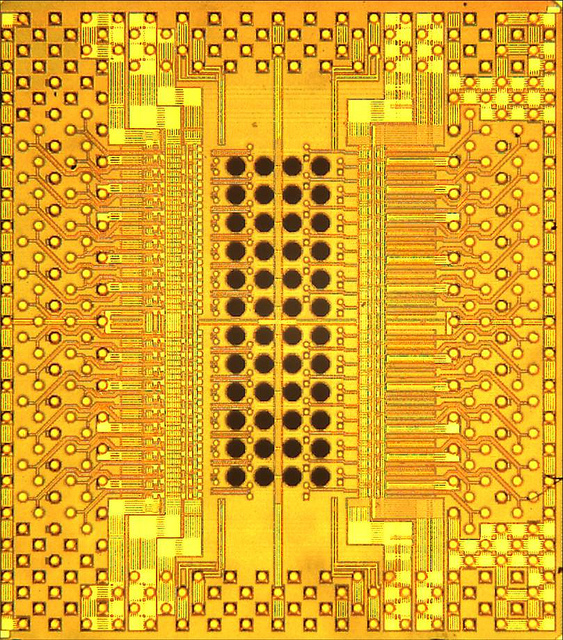[Techtaffy Newsdesk]
IBM scientists have developed a prototype optical chipset, dubbed ‘Holey Optochip’, that is the first parallel optical transceiver to transfer one trillion bits – one terabit – of information per second, the equivalent of downloading 500 high definition movies.
With the ability to move information at blazing speeds – eight times faster than parallel optical components available today – the breakthrough could transform how data is accessed, shared and used for a new era of communications, computing and entertainment, says the company. The raw speed of one transceiver is equivalent to the bandwidth consumed by 100,000 users at today’s typical 10 Mb/s high-speed internet access. Or, it would take just around an hour to transfer the entire U.S. Library of Congress Web archive through the transceiver.
(Clint Schow, Researcher, IBM ): Reaching the one trillion bit per second mark with the Holey Optochip marks IBM’s latest milestone to develop chip-scale transceivers that can handle the volume of traffic in the era of big data.
Optical networking offers the potential to significantly improve data transfer rates by speeding the flow of data using light pulses, instead of sending electrons over wires. Because of this, researchers have been looking for ways to make use of optical signals within standard low-cost, high-volume chip manufacturing techniques for widespread use.
Scientists in IBM labs developed the Holey Optochip by fabricating 48 holes through a standard silicon CMOS chip. The holes allow optical access through the back of the chip to 24 receiver and 24 transmitter channels to produce an optical module capable of record setting data transfer rates.
The Holey Optochip module is constructed with components that are commercially available today, providing the possibility to manufacture at economies of scale.
Parallel optics is a fiber optic technology primarily targeted for high-data, short-reach multimode fiber systems that are typically less than 150 meters. Parallel optics differs from traditional duplex fiber optic serial communication in that data is simultaneously transmitted and received over multiple optical fibers.
[Image: Holey Optochip; Courtesy: IBM]


